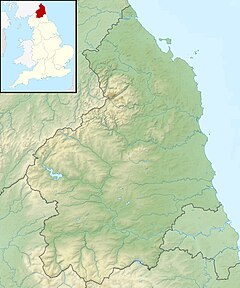
The River Tame flows through Greater Manchester, England. It rises on Denshaw Moor and flows to Stockport where it joins the River Goyt to form the River Mersey.
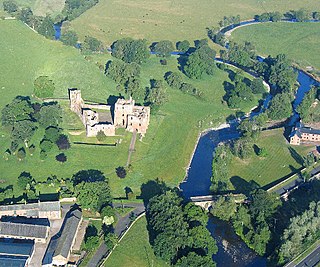
The River Eamont is a river in Cumbria, England and one of the major tributaries of the River Eden. The name of the river is from Old English (ēa-gemōt) and is a back formation from Eamont Bridge which means the junction of streams.

The River Misbourne rises in a field on the outskirts of Great Missenden in Buckinghamshire, passing through Little Missenden, Old Amersham, Chalfont St Giles, Chalfont St Peter and under the Chiltern railway line and the M25 motorway to its confluence with the River Colne just north of where the Colne is crossed by Western Avenue, the A40 road. It falls by around 94 m (310 ft) in the course of its 27 km (17 mi) length.
The Lorteburn or Langbourne is a lost stream or river, which ran in the east of the City of London, arising near to Aldgate, flowing south near to the Tower of London, and discharging into the River Thames. The stream appears to have been covered over or dry by the early 14th century but its course has been discovered during archaeological digs in the area and the watershed can be traced in the street level contours of that part of the city as mapped by Kelsey in 1841. The stream gave its name to the Langbourn ward of the city. The river is seldom included on maps or lists of London's lost rivers, and its existence is denied by Nicholas Barton, in his 1962 book Lost Rivers of London, but in more recent work David Bentley argues for its existence.

The River Looe is a river in south-east Cornwall, which flows into the English Channel at Looe. It has two main branches, the East Looe River and the West Looe River. The eastern branch has its source near St Cleer only 0.31 miles (0.5 km) away from the Golitha Falls on the River Fowey, and flows south, passing close to the western outskirts of Liskeard. The western branch has its source near Dobwalls.

The River Chater is a river in the East Midlands of England. It is a tributary of the River Welland, and is about 22 miles (35 km) long.
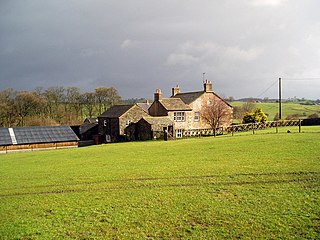
Bracewell and Brogden is a civil parish in the West Craven area of the Borough of Pendle in Lancashire, England. According to the 2001 census it had a population of 238, increasing slightly to 244 at the 2011 census. The parish includes Bracewell and Brogden ; historically, both were in the West Riding of Yorkshire.

Cod Beck is a river in North Yorkshire, England. It has a catchment area of 209 km2 (81 sq mi).
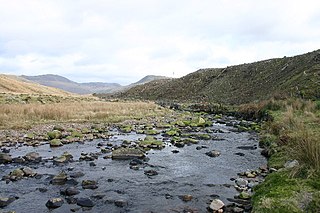
The River Bleng is a tributary of the River Irt in the county of Cumbria in northern England.
Swinton is a small village in the Harrogate district of North Yorkshire, England. It is situated to the immediate south-west of Masham and separated from it by the River Burn. The village is at the eastern end of Swinton Park and shares a civil parish with Warthermarske.
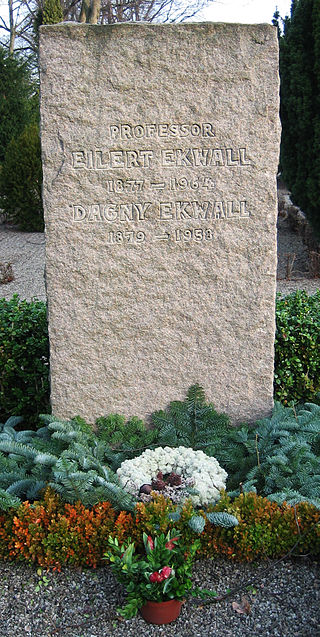
Bror Oscar Eilert Ekwall, known as Eilert Ekwall, was Professor of English at Sweden's Lund University from 1909 to 1942 and was one of the outstanding scholars of the English language in the first half of the 20th century. He wrote works on the history of English, but he is best known as the author of numerous important books on English placenames and personal names.
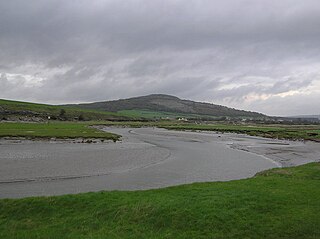
The River Keer is a river in Northern England. It flows for 10 kilometres (6.2 mi) through the English counties of Lancashire and Cumbria.
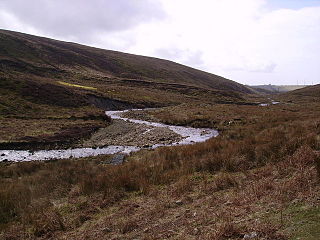
The River Calder is a 13-mile (21 km) long river that is one of the main tributaries of the River Wyre in Lancashire, England. Like the other rivers in England with the name Calder, its name is thought to derive from a mixture of Old Welsh and Old British words meaning "hard and violent water or stream".

Grasmere is one of the smaller lakes of the English Lake District, in the county of Cumbria. It gives its name to the village of Grasmere, famously associated with the poet William Wordsworth and his sister Dorothy Wordsworth, which is immediately to the north of the lake.

The Rede is a river in Northumberland, England. The river rises on Carter Fell on the Anglo-Scottish border feeding Catcleugh Reservoir and joins the River North Tyne below the village of Redesmouth. The Rede is one of only two rivers in the North East of England that has the freshwater pearl mussel in its waters.

The River Onny is a river in Shropshire, England. It is a major tributary of the River Teme.
Unthank is a village near Haltwhistle in Northumberland, England. It is first mentioned in writing as Unthanc around 1200.
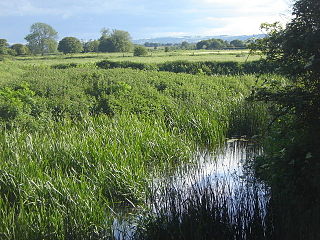
The River Isle flows from its source near Combe St Nicholas, through Somerset, England and discharges into the River Parrett south of Langport near Midelney.
Ees is an archaic English term for a piece of land liable to flood, or water meadow. It is derived from the Anglo-Saxon ¯eg meaning "'island', also used of a piece of firm land in a fen and of land situated on a stream or between streams". It is still used locally in Greater Manchester to indicate former water meadows and flood basins adjoining the River Mersey: Chorlton Ees, Sale Ees and Stretford Ees. In the Lake District there are Ees and Strickland Ees on Esthwaite Water. The term is also modified to "eye" and "eea" in the name of Park Eye.

Ledwyche Brook is a minor river in south Shropshire, England. It is sometimes referred to as the River Ledwyche and spelled variously, including "Ledwich" or "Ledwych". The brook is a tributary of the River Teme.

